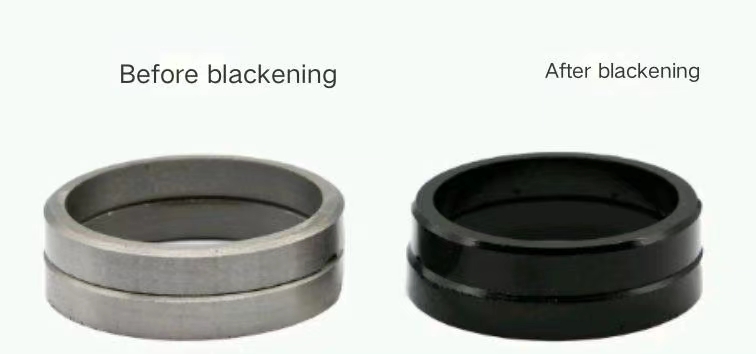What is the difference between blackening and black oxidation?

There are also various colors in our daily life. Everyone has their own favorite color. Among the many colors, I will find that many people like black. Whether it is furniture items, handicrafts, etc., of course, black is also particularly popular in the process of machine processing surfaces.
So today we will talk about the difference between black oxidation and blackening.
There are many opinions on the Internet. Some say that the two processes are the same. I was very confused at first. Let's find out together and see what the difference is.
1. Color difference
Blackening "Blackening" usually refers to the surface of an object becoming dull or losing its glass due to some chemical reaction or external ingredients. This may be the result of deposition of substances, oxidation, corrosion, or other chemical reactions. The blackening process may not necessarily involve oxidation. "Black oxidation" more specifically refers to an oxidation process in which the surface of a metal or alloy reacts with oxygen to form an oxide layer. This oxide layer is usually black. This oxidation process is sometimes called "thermal oxidation" because it usually involves exposing the metal to high temperatures, which react with oxygen.
2. Differences in formation principles
Blackening is usually caused by oxidation or chemical reactions on the metal surface, resulting in the formation of a layer of oxide on the metal surface. Black oxidation is a controlled oxidation reaction on the metal surface under specific conditions to form an oxide film. The oxidation coloring technology is used to form a colored oxide layer on the metal surface.
3. Differences in processing methods
Blackening is usually an uncontrollable chemical reaction, while black oxidation is a controllable metal surface treatment process that requires specific equipment and processing steps, including cleaning, degreasing, pickling, oxidation, dyeing, sealing, etc. process. During the treatment process, parameters such as temperature and current density need to be strictly controlled to ensure the quality and color uniformity of the oxide film.
To sum up, there are obvious differences between blackening and black oxidation in terms of color, formation principle and treatment method. Blackening is an uncontrollable oxidation of metal surfaces, while black anodizing is a controllable metal surface treatment technology.
What are the benefits of going dark:
Improved Corrosion Resistance: Blackening often creates a strong oxide or other protective film that improves the part's corrosion resistance. This can be very beneficial for parts used in harsh environments, especially metal parts.
Beautiful appearance: Blackening treatment can give the parts a black or dark appearance, improving its overall appearance and texture. This may be an important consideration for some high-end products or applications that require aesthetic appearance.
Reduce reflections: Black surfaces often reduce the reflection of light, which may be helpful for special applications where the effects of reflections need to be reduced (such as optical equipment or military applications).
Improved surface hardness: During the blackening process, an oxide layer with higher hardness is sometimes formed, thereby improving the hardness and wear resistance of the part surface.
Prevent rust-prone materials: For rust-prone materials, blackening treatment can effectively delay the formation of rust and increase the service life of parts.
Logo and branding: By blackening, the logo, brand or text on the part can be more clearly displayed on the surface.